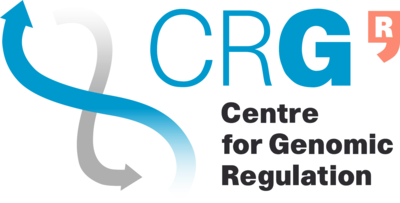CRG Introduction to R 2018
From Bioinformatics Core Wiki
Contents
Description
This is an introductory course to R programming.
The course is offered in 4 slow-paced practicums for absolute beginners. The goal is to offer a good base with a lot of hands on exercises.
We will use the R Studio of the CRG server.
Course Instructor
- Sarah Bonnin - Bioinformatician at the CRG bioinformatics core facility.
Dates, Time and Location
- March 19-20 & April 16-17
- 10:00 - 14:00
- PRBB Bioinformatics classroom (468). 4th floor. The hotel/North wing.
Course Syllabus, Schedule, and Materials
The day before each session, the slides will be uploaded in case you want to print them.
- Day 1
- Introduction to R Studio
We will use the R Studio of the CRG server (http://rstudio.linux.crg.es). We will go through what can be done with R Studio, from file and folder manipulation/navigation, to getting help on R functions. - Paths / directories
- Basics of R: syntax, create an object, manipulate the object, simple arithmetics.
- Functions usage in R
Arguments. Get help. - R scripts: write and save commands, run them as a block. Comment code.
- Data types.
- Data structures:
- Vectors
Basic (and most important) data structure in R. We will learn how to create, modify, subset, manipulate, compare vectors. - Introduction to factors: categorical vectors.
- Vectors
- Introduction to R Studio
Slides day1
Exercises day 1 (1, 2 & 3)
Correction of exercises:
- Day 2
- Missing values: how to deal with NA values.
- Matrices & data frames
2-dimensional objects: how to create, subset, select, manipulate.
Slides day2
Exercises day 2 (4 & 5)
Correction of exercises:
- Day 3
- Input / output
Reading in and writing out files. Adapting I/O to file format. - Library / packages
Install and load packages. Look for functions in those packages.
- Input / output
Slides day3
Exercises day 3 (6 & 7)
Correction of exercises:
- Day 4
- Basic plotting (base graphics package)
Scatter plots, boxplots, barplots, pie plots, histograms. - Introduction to ggplot2 package
ggplot2 provides functions for creating and customizing plots. We will learn the basic structure and how to produce simple plots. - Input / output
We will save plots as files in different formats, both from R Studio and from the terminal.
- Basic plotting (base graphics package)
Slides day4
Exercises day 4 (8 & 9)
Correction of exercises:
